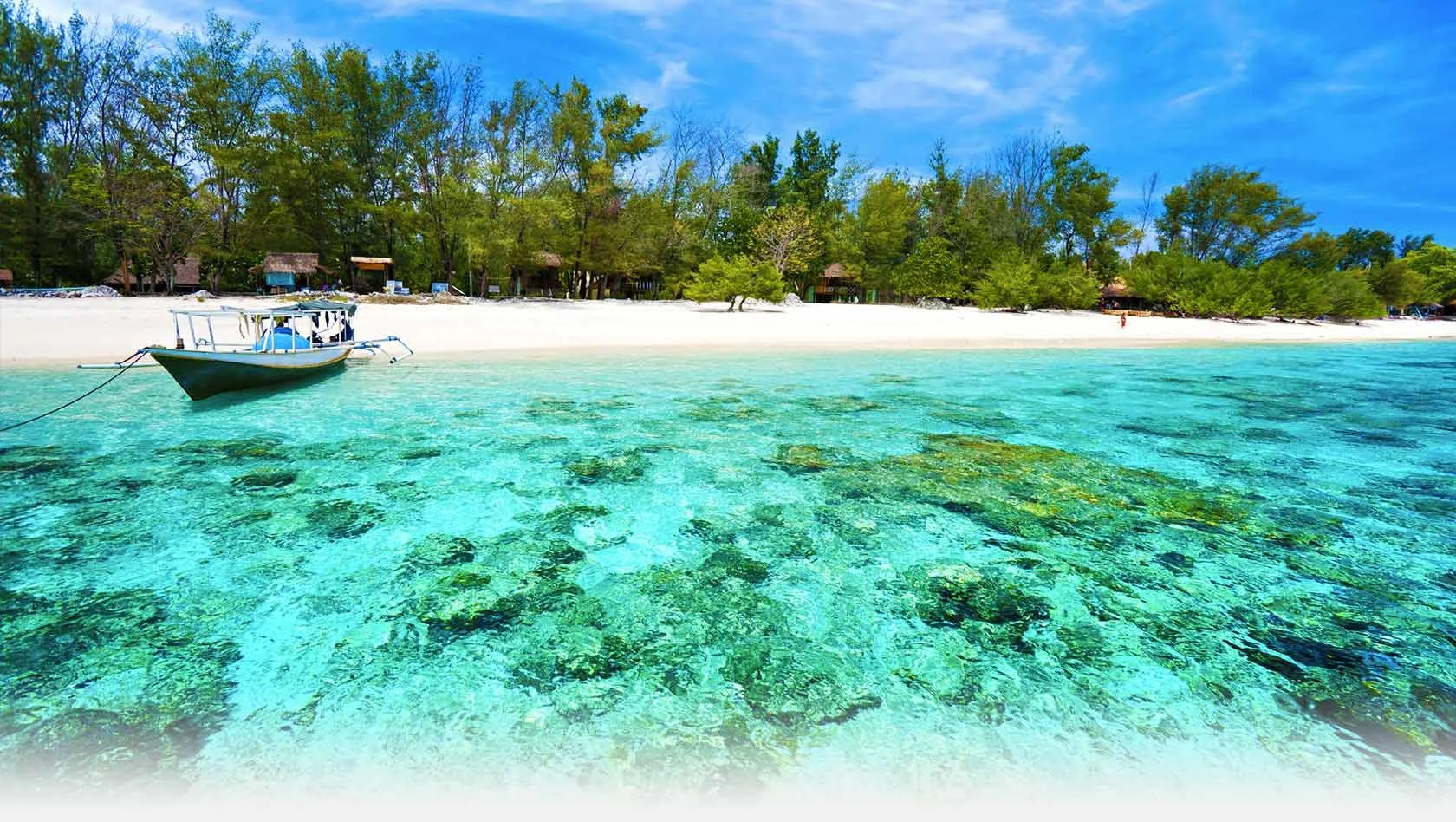Stretching away from the northwest corner of Lombok, the Gili Islands are three idyllic atolls where the sand is powdery white, the water a clear sparkling turquoise, and the sunsets over Bali’s Mt. Agung in the west are simply spectacular.
Home to the largest Irish bar on the smallest island in the world, ominous sounding dive sites like ‘Shark Point’ and ‘Manta point’, a large turtle hatchery project, over 100 Bio Rock reef regeneration programs built in intriguing shapes and objects, and the lure of pure white sandy beaches. Lombok’s Gilis make a surprisingly ideal getaway destination. Getting there is easy and whichever way you chose, you will be guaranteed to see some of Bali and Lombok’s breathtaking scenery.
Fortunately all three Gili Islands will not permit any type of motorized transport on them and therefore rely on bicycles or horse and carts, locally known as ‘Cidomos’. Now electric bikes can be rented from any of the kiosks and cost from upwards of Rp50,000 an hour, or for better value, ask for the daily rate. ( Plese note, there is no actually road as such around any of the islands, you will find large sections of sand that bikes have to be pushed). Cidomos (local horse and carts) are easily located all over the islands but tend to hang around the harbour and busy spots, particularly when the fast boats pull in. Arrangements can be made if you are staying in a more remote place on the island, for instance a late ride home…. Haggling is the norm, and always agree a price before your journey. To go around the island can be as much as Rp400,000 to Rp500,000.
Although originally discovered by backpackers in the mid eighties, and with a reputation as a party destination, the Gilis now boasts themselves as a great destination suitable for families of all ages. Various new hotels, luxury villas, and boutique bungalows now cater for children and offer good value, some also have baby sitting services, and with lots of activities on the islands families are sure to enjoy their holiday. Be sure to book well in advance for the busy periods like Christmas and New Year, and especially for the month of August.
The best places for snorkeling and swimming are along the main beach areas, Masks, fins and snorkels can be rented by the hour or day, from any of the many PADI and SSI dive centers or the kiosks in the street. Glass bottom boat trips around the three Gili islands are available and cost around 250,000rp per person. You can see all types of marine life just by snorkeling including diverse fish and corals not to mention the turtles, but please be careful not to touch anything in this fragile ecosystem. Beware of strong currents and do not attempt to swim between any of the islands.
When travelling to the Gili islands it is best to bring some cash, however, there are other options now. Their are ATMs on all three Gilis which are open 24 hours, while all the dive centers and bigger hotels accept Visa and MasterCard credit cards with an additional 3% bank charge.
There is now internet on Gili Trawangan, Gili Meno and Gili Air which most businesses are happy to share their internet if you just buy a drink. Although all operate at different speeds. If you need fast internet or plan on uploading or downloading large files, the internet service is not like in the west and you may want to plan to do this either before or after your stay.
Sir Alfred Russel Wallace, the so-called father of animal geography, he formulated his ideas on evolution by natural selection while observing and collecting wildlife in the islands of Southeast Asia. He was particularly impressed by the sudden difference in bird families he encountered when he sailed only twenty miles east of the island of Bali and landed on the untouched island of Lombok.
On Bali the birds were clearly related to those of the larger islands of Java and Sumatra and mainland Malaysia. On Lombok the birds were clearly related to those of New Guinea and Australia. He marked the channel between Bali and Lombok as the divide between two great zoological geographic regions, the Oriental and Australian.
In his honor this dividing line, which extends northwards between the islands of Borneo and Sulawesi, is still referred to today as the Wallace Line.
The first island of the Australasian region happens to be Gili Trawangan.

